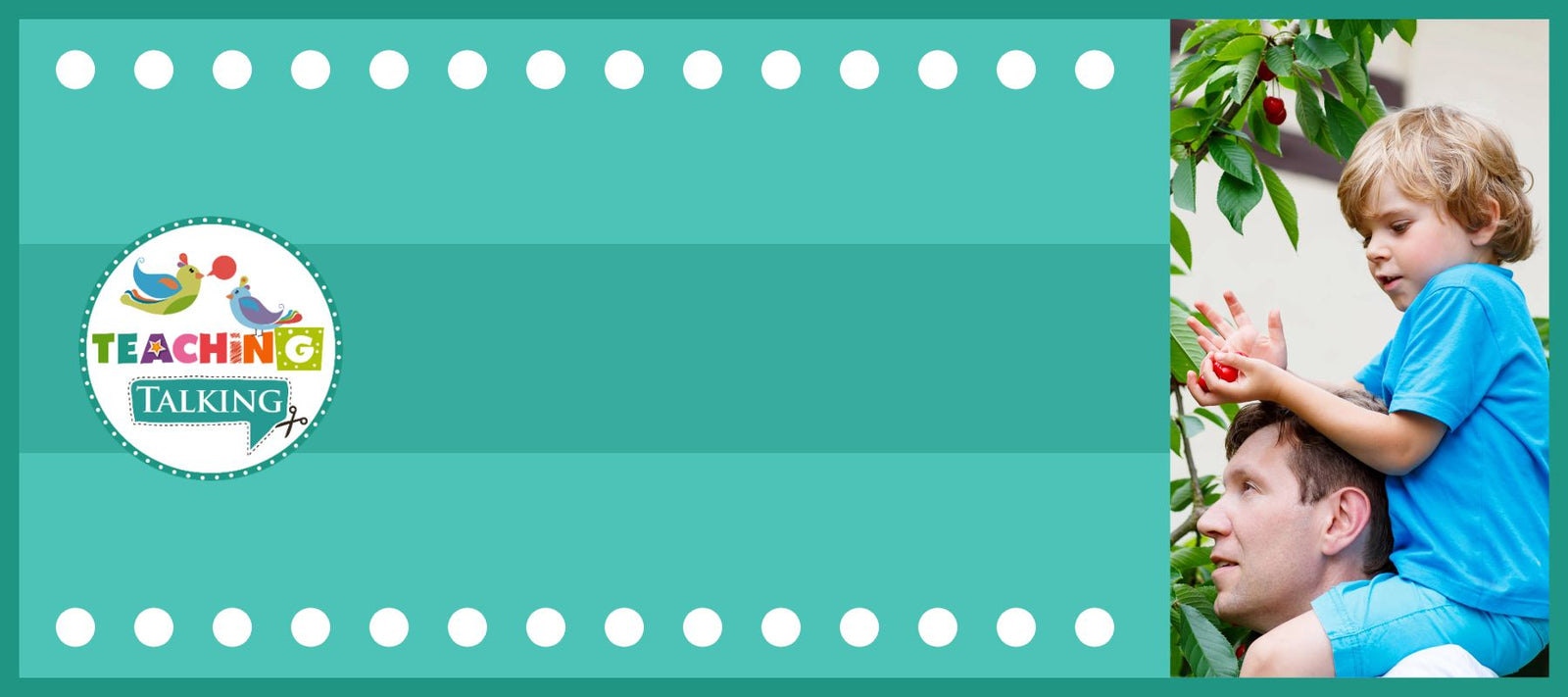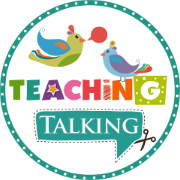
Language Activities in Everyday Life
April 14, 2015 5 min read
Working with your child on language activities is a focused way to develop their communication skills.
This is true whether your child has typically developed communication or if they are language delayed or have a communication disorder.

But when I work with families as a Speech & Language Therapist, typically they tell me about two kinds of problems when it comes to working with their child at home…
“Something came up; We had such a busy week; We had family come to stay; The dog needed to go to the vet; We had to go to four birthday parties and a wedding this week.” You get the idea! Life got in the way.
Or, they tell me:
“He just wants to play; He doesn’t want to work with me; He just wants to play when he comes home from daycare.”
These two scenarios are so common, I could easily hear them five times each day and each family tells me with such a guilty feeling that they just didn’t get time to work on language activities this week.
We parents feel enough guilt about a million things without adding more concerning speech therapy homework. The solution is to build good habits within your daily routine so that you are targeting language development all the time. For example, while you do chores is a perfect time to practice, and it’s done without having to concentrate and focus on it specifically.

If you have a child who is already attending Speech and Language Therapy then you should probably take a moment to look up what they are targeting for the week. But after that, you can just go back to tending to your home and daily routine.
Integrating Language Activities As You Go
So what do I mean by this?
Well, even in your crazy, busy week with your four birthday parties, a wedding, a sick dog, and a kid who just wants to play, you are still going to do the shopping right? You are still going to do laundry, make dinner, lay the table for a meal, and put the dishes away.
Instead of prohibiting you from working on developing your child’s communication skills, turn these chores into the language activities.

Here are some examples…
Fun Language Activities Using Laundry
You will know from working with your child on communication development or with your therapist, the level of task that they are targeting. After that, it really is as simple as it sounds. The real key to all of these language activities is to MAKE IT FUN!
As adults, laundry is a chore but to my two-year-old, sorting it out is great fun! Pick up some of that enthusiasm and act as a cheer squad as you go through this activity to keep your kids interested and on task.
If you are working on developing your toddler’s attention for a task and teaching them the names of items. You take the clean laundry in from the line and dump the pile in the middle of the floor.
Say to your child “I need help, I can’t find the socks – can you help me?”
Then have fun as you hunt through all the clothes, cheering every time you find a sock!

Make sure you say the word each time, “Yeah! I got one, I found a sock!” or “Oh! Another one! What did you find? You found a sock!”
You can repeat this with different items each time and then make it harder by adding colors. “Now we need to find the white T-Shirts.”
This language activity works with any age from toddler to teen. Step this activity up to a level where your teen can work on their auditory memory and complete their chores at the same time.
Prompt them with instructions like, “First put the blue socks in your room, then the T-Shirts and jeans on my bed.” This task can be varied depending on the level of their ability.
This language activity can be used to target so many different things! Here are a few ideas off the top of my head to help get you started.
Vocabulary Development |
|
Concept Development |
|
Auditory Memory |
|
Comprehension |
|
Other chores that work as language activities for you to try…
- Kitchen clean up
- Grocery shopping
- Tending to the garden
- Set the table
- Clean out the closet
- Tidy up bedroom

Or switch it around and look at it the other way…
If your child is working on… |
Such as… |
Try… |
|---|---|---|
Pronouns |
He/She |
Shopping for each family memberCall out as you go around. “Dad wants apples – he likes apples.” “Mom wants strawberries – she likes strawberries.“ |
Prepositions |
On / beside / under |
Setting the tableGive your child instructions such as: “Put the fork beside the plate.” “Put the table mat under the plates.“ |
Vocabulary |
Names of household items |
Tidy the houseGo on a hunt for all the items that are out of place. “I found a plate here in the den – where should that go?” “That’s right, in the dishwasher.“ |
Plurals |
One knife – two knives |
Clear the tableHave them tell you what they are doing as they go. “I am putting this clean knife in the drawer.” “I am putting all the dirty knives in the sink.“ |
Are you starting to see how this could work? Believe me, once you get used to it you will quickly find that instead of a two-minute rush to fit in homework before bed, suddenly you are working on language activities every minute that you are with your kids. It takes a bit of work to get yourself into the habit, but once you are in it, it is there to stay.
One Mom told me about shopping for groceries with her child and singing, “Put the carrots in the cart, in the cart!” to the tune of “If you’re happy and you know it, clap your hands!” Brilliant! Your child is entertained while you shop and you are teaching them as you go.

These are the children who make progress with language most quickly. It is being taught as it should be, by surrounding them in a language-rich environment, not by coloring in yet another worksheet and ticking the box that it is done.
I’ll admit, I use plenty of worksheets in my practice, but I want parents to use them as a cheat sheet. To work out what their child does and doesn’t know about the target and to refer to as the week goes on. To truly make progress with language therapy you need to go way beyond the worksheet and lose the guilt you feel when you realize that this week’s sheet is not colored in – AGAIN!
It’s Never Too Early to Begin
Finally, I have one more secret way to include language activities on a busy day with toddlers and preschoolers. If you have very small children one of the easiest ways is to use nursery rhyme CDs while you drive with your kids in the car!
Your child will love the tunes and not realize that they are learning the important concept of rhythm and rhyme (both are very important preliteracy skills). I recommend 100 sing-a-long songs for kids from Ceadermont Kids. It contains a great selection with catchy tunes and is not too fast-paced for young learners to join in.
Other articles you might like to read…
Subscribe
Sign up to get the latest on sales, new releases and more …




